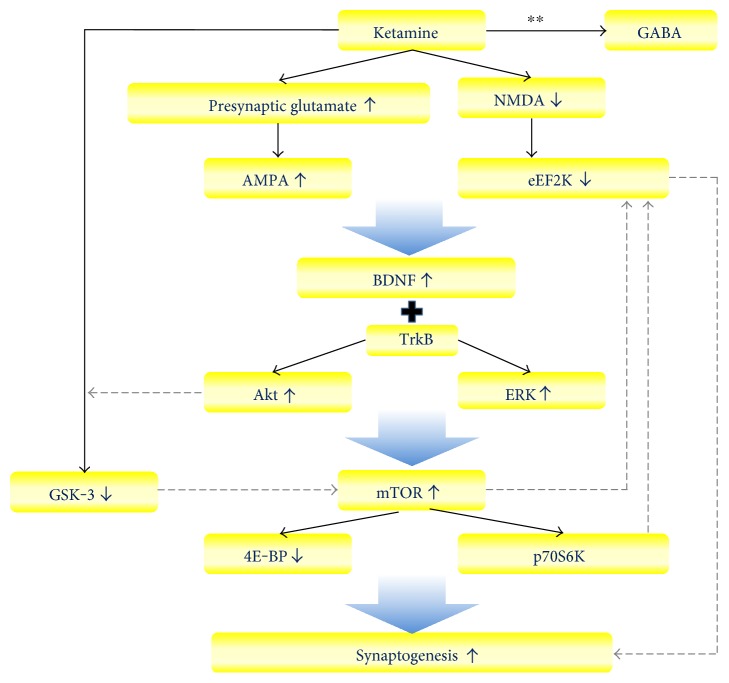Figure 1.
The hypothesized mechanism of ketamine's antidepressant effect. Ketamine increases AMPA receptor activities and suppresses NMDA receptor activities, which lead to activation of BDNF activity. The BDNF-TrkB signalling activates Akt and ERK pathways, which stimulate mTOR signalling. mTOR signalling increases synaptic protein synthesis by inhibiting 4E-BP and phosphorylating p70S6K. Ketamine also inhibits GSK-3 activity and may interact with GABA. ∗Dash line: the interaction was known in other studies, but it is still unclear in the mechanism of ketamine's antidepressant effect. ∗∗The interaction is still unclear because the study results are inconsistent. AMPA: α-amino-3-hydroxy-5-methyl-4-isoxazolepropionic acid; NMDA: N-methyl-D-aspartate; eEF2K: elongation factor-2 kinase; BDNF: brain-derived neurotrophic factor; TrkB: tropomyosin receptor kinase B; ERK: extracellular signal-regulated kinases; mTOR: mammalian target of rapamycin; 4E-BP: 4E binding proteins; p70S6K: p70 S6 kinase; GSK-3: glycogen synthase kinase-3; GABA: γ-aminobutyric acid.

